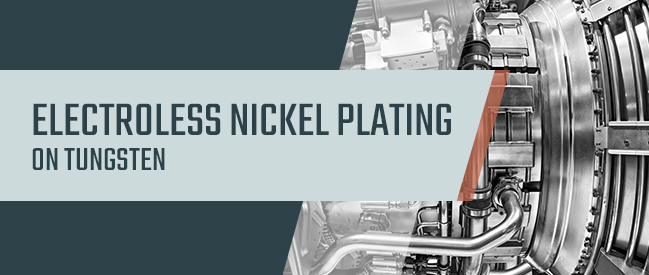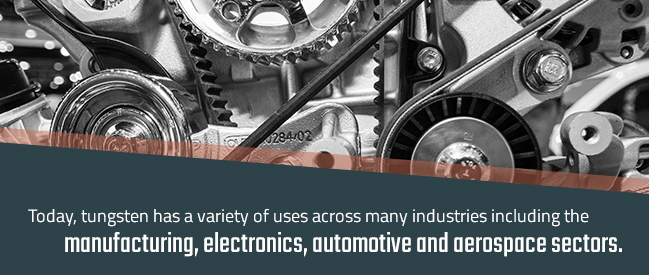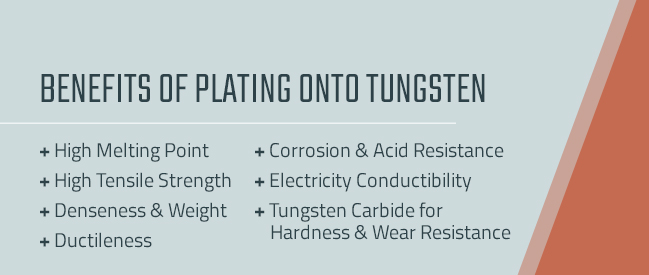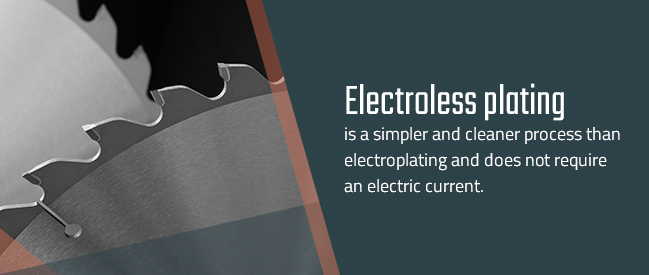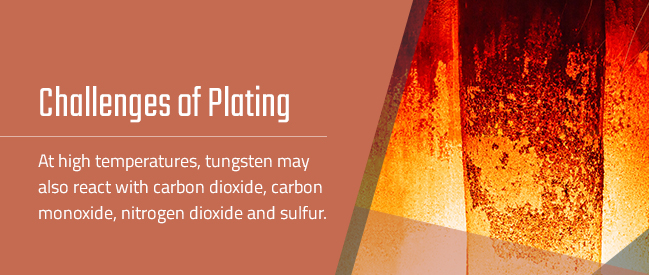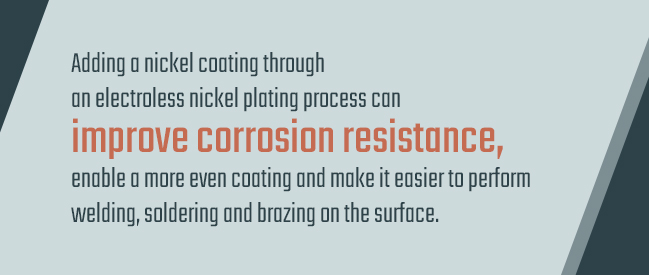Tungsten, a refractory metal whose name means heavy stone, is hard to work with but has some exceptional qualities. These characteristics make it useful for numerous applications, including many that involve harsh conditions and high temperatures.
Tungsten was likely first used in China more than 350 years ago to give porcelain a peach color through the use of a tungsten pigment. In 1779, the Irish chemist Peter Woulfe began introductory research into the material. Because of this early research, the original name for the substance was Wolfram, which is a term that some countries still use today. It is also why the chemical symbol for tungsten is W.
The name tungsten came about in 1781 when Swedish chemist Karl Wilhelm Scheele isolated an acidic white oxide while continuing research into the substance. Researchers Juan and Fausto Elhuyar typically get the credit for the discovery of tungsten. In 1783, their work led them to isolate the metal oxide from wolframite. They then took it a step further than the other researchers and reduced the substance to tungsten metal through a process of heating it with carbon.
Tungsten didn’t see much use until the 1840s. During this time, researcher Robert Oxland obtained a patent for sodium tungstate and tungstic acid for industrial use. He later received another patent for an iron-tungsten alloy which is still in use today. Tungsten then began to serve as an important material in the manufacturing of lightbulb filaments.
Today, tungsten has a variety of uses across many industries including the manufacturing, electronics, automotive and aerospace sectors. Various alloys containing tungsten now see prominent use.
Plating can help make it easier to use tungsten for any of various purposes. You can plate tungsten onto many different substances and also plate other materials onto tungsten alloys if you have the right methods and equipment. There are also numerous platings which are alloys of tungsten and other metals.
Nickel is the plating material that works best with tungsten alloys. A qualified plating company can use electroless nickel plating to apply a coating to these materials. Using tungsten as a substrate for electroless nickel plating can create a product that’s even more useful than the elements on their own. At SPC, we have the expertise and equipment to perform this challenging plating operation.
Benefits of Electroless Nickel Plating Onto Tungsten
Tungsten has many beneficial qualities that make it ideal for various industrial uses. It shares many of these characteristics with the other refractory metals: molybdenum, tantalum, niobium and rhenium. These benefits include:
- High Melting Point: Tungsten is perhaps best known for its extremely high melting point, which is, in fact, the highest of any metal. It’s melting point is 6,100 degrees Fahrenheit or 3,370 degrees Celsius. Because of its ability to maintain its strength at high temperatures, it’s valuable for various high-temperature applications.
- High Tensile Strength: Tungsten also has an extraordinarily high tensile strength. It has an ultimate tensile strength of 142,000 pound-force per square inch, or psi. At 3,000 degrees Fahrenheit, it has a tensile strength of 25,000 psi. It retains this quality even at small diameters, such as when formed into thin wires.
- Denseness and Weight: Tungsten is also very dense, with a density of 0.697 pounds per cubic inch. It’s also one of the heaviest metals. In fact, only rhenium, osmium and iridium weigh more. One cubic inch of tungsten weighs more than two-thirds of a pound.
- Ductileness: Despite its high density, weight and strength, tungsten is very ductile. When formed into a thin wire, it still retains its superior strength and other valuable qualities.
- Corrosion and Acid Resistance: Tungsten is also highly corrosion-resistant, which makes it even more useful in harsh environments. It offers resistance to atmospheric corrosion and various acids at room temperature. It can even resist liquid metals, such as mercury, hydrogen, sodium and magnesium.
- Electricity Conductibility: Tungsten can conduct electricity and heat effectively, making it useful for various electronic applications.
- Tungsten Carbide for Hardness and Wear Resistance: Tungsten is often alloyed with carbon, which forms tungsten carbide. This material has exceptional hardness and wear resistance. Because of these attributes, it’s frequently an essential material for the manufacturing of cutting tools and industrial equipment.
Plating Benefits
Plating onto tungsten can make this material even more useful by enhancing some of its properties. You can apply various materials and processes for tungsten plating services.
You can use one of several processes to plate onto tungsten, as well as to plate with tungsten. Plating onto tungsten is challenging, but with the right tools and skills, it is possible. Typically, tungsten alloys, rather than pure tungsten, is used as a substrate. It is easier to plate onto a tungsten alloy, such as tungsten carbide, than onto pure tungsten. Nickel is the coating that adheres best to tungsten.
Using an electroless nickel plating process on a tungsten-based substrate has various benefits. Electroless plating does not require an electric current as standard electroplating does. It uses a specialized solution in which you bathe the components that will be plated. In this plating bath, chemical reactions bind the nickel to the substrate.
Electroless plating is a simpler and cleaner process than electroplating. It’s also often more cost-effective and enables you to deposit a coating with a more uniform thickness that reaches even recessed parts of the substrate surface. The process also makes it easier to control the thickness of the coating and avoid excess coating around the corners and edges of the workpiece. Because the plating is less porous, it also provides enhanced corrosion protection. You can also choose either bright, semi-bright or matte nickel finishes.
Applying a nickel coating to a tungsten workpiece can enhance the item’s resistance to corrosion and the formation of rust.
Challenges of Plating Electroless Nickel Plating Onto Tungsten
Plating onto tungsten and tungsten alloys is no easy task. This material does not readily lend itself to plating. If you can push through these challenges and complete the electroless nickel plating of a tungsten carbide substrate, the result can be extremely beneficial.
One of the primary reasons that tungsten plating is difficult is that tungsten is highly reactive, as are the other refractory metals. Tungsten can retain its strength and other useful properties at high temperatures. At these elevated temperatures, though, it may develop volatile oxide films. Specifically, this occurs at temperatures above 538 degrees Fahrenheit. At high temperatures, tungsten may also react with carbon dioxide, carbon monoxide, nitrogen dioxide and sulfur.
Creating a vacuum, using the material in a protective environment or applying a coating to a tungsten workpiece can help to prevent these oxide films. Because an outer layer can provide value in this way, electroless nickel plating is useful for tungsten materials.
Before plating onto tungsten, the part must go through involved cleaning processes to improve adhesion. Although nickel coating is one the best materials to use to plate tungsten, the component should go through an embrittlement relief process after plating to ensure adequate coating adhesion.
These challenges lead manufacturers to plate onto tungsten alloys instead of pure tungsten. These alloys include tungsten-carbide and molybdenum-tungsten. You can also alloy nickel coatings with other metals, including tungsten, boron, tin and manganese, to achieve different results.
Cleaning Tungsten Before Plating
Before plating onto a tungsten workpiece, you must put it through a thorough cleaning process. Such processes are necessary for a variety of metals but are especially crucial for tungsten because of the metal’s high reactivity and other associated challenges.
Typically, the process starts with pre-cleaning, before moving on to secondary cleaning and, finally, surface activation. Pre-cleaning aims to loosen and remove the majority of foreign materials that may be on the surface. This usually involves soaking the material in a hot alkaline cleaning solution.
The first step in the tungsten pre-plating cleaning process is often soaking the substance in an alkaline potassium ferrocyanide soak for one minute and then rinsing.
Next, it is boiled in 10 percent potassium hydroxide for 10 minutes, rinsed, dipped in 10 percent hydrochloric acid for 30 seconds and rinsed again.
You might then activate the materials with palladium chloride or a Wood’s nickel strike before rinsing a final time. After these steps are complete, you can move on to plating.
Applications That Use Electroless Nickel Plating on Tungsten
Manufacturers often use tungsten and its alloys for applications that require high-temperature resistance, strength and wear resistance. Applying a nickel coating to these materials can improve resistance to corrosion and rust.
Plating companies often use electroless nickel plating on the alloy tungsten carbide, which is an ideal material when extreme hardness and wear resistance is needed. Tungsten carbide is commonly used in the production of cutting, turning and milling tools used in the petroleum, mining, metalworking, woodworking and other industries. It’s used for making knives, drills, saws and other cutting tools.
Due to tungsten’s electrical conductivity and heat resistance properties, it can be used in the production of various electronic components and devices such as electrical contacts, semiconductors and heat sinks. Adding a nickel coating through an electroless nickel plating process can improve corrosion resistance, enable a more even coating and make it easier to perform welding, soldering and brazing on the surface. Its heat resistance also makes it valuable in the manufacturing of industrial equipment components, such as heating elements, radiation shields and evaporation boats.
Tungsten’s resistance to heat, along with nickel’s corrosion resistance, make it ideal for use in the harsh environments that automotive and aerospace components must endure. These parts should also have excellent resistance to wear, because of the frequent and sometimes high-speed movement they must undergo. This is another beneficial quality that tungsten and its alloys have. Tungsten also plays a role in the production of heavy metal alloys such as high-speed steel, which is used to produce various automotive parts.
Plating companies may also deposit alloys made with tungsten and nickel onto tungsten alloys and other materials. Nickel-phosphorous alloys are one of the most common plating alloys used for industrial applications. More recently, the alloy nickel-phosphorous-tungsten has emerged as a promising industrial plating material. You can use electroless plating to apply this material using a plating bath of nickel, tungsten salts and other substances. Phosphorous provides enhanced hardness and wear resistance, but adding in even small amounts of tungsten can significantly increase these properties, as well as the corrosion resistance, of a coating.
Nickel-tungsten alloys are also useful for various high-temperature applications. This alloy can serve as a replacement for hard chrome plating. As compared to chrome plating, a nickel-tungsten coating is harder and more wear resistant. You can also apply multiple layers in one step, which increases the efficiency and cost-effectiveness of the plating process.
The Importance of Choosing the Right Plating Company
Plating onto tungsten and alloys that contain tungsten is a challenging undertaking for which you need the right tools and experience. Only the most advanced metal finishing companies can reliably produce adequate nickel plating on tungsten alloy surfaces. When you need a tungsten-based substrate plated with a uniform nickel coating that can increase strength, wear resistance and corrosion resistance, as well as provide other benefits, you need to trust a professional plating company like SPC.
We have developed a plating process for use with tungsten that delivers high-quality results consistently. We will work with you to determine what plating solution is best for your needs and come up with answers to your unique metal finishing challenges.
We also provide a range of other metal finishing services, plating and otherwise, to clients across diverse industries. In every project we undertake, we prioritize high-quality results and customer satisfaction. We are constantly improving our ISO-certified processes so that we can continue to provide consistent results and can use the methods that are best suited to our customers’ needs.
To learn more about SPC, our electroless plating services and the other services we provide, feel free to explore our website and blog. You can contact us or fill out our online quote form for a free, no obligation quote within one business day.


